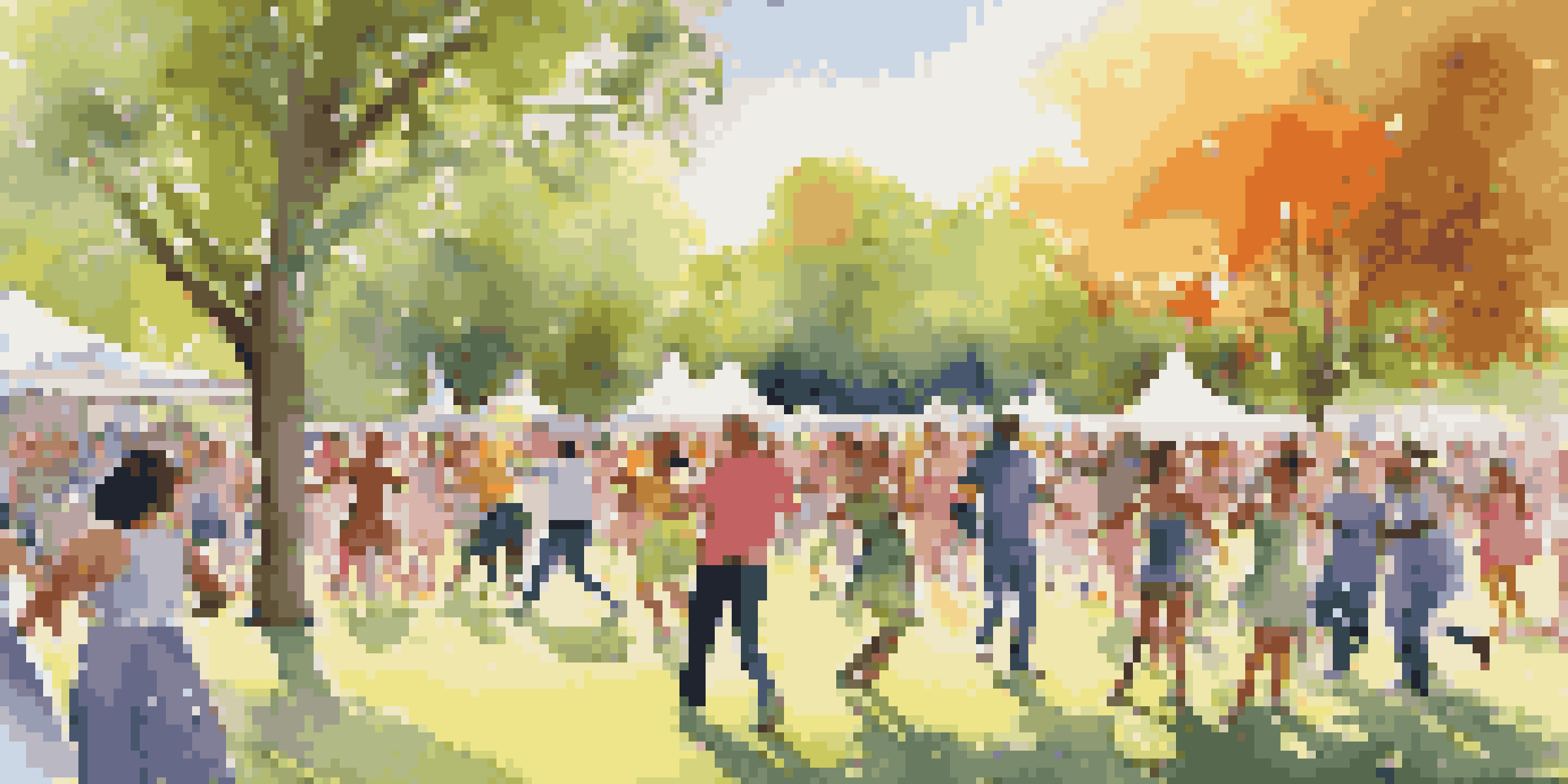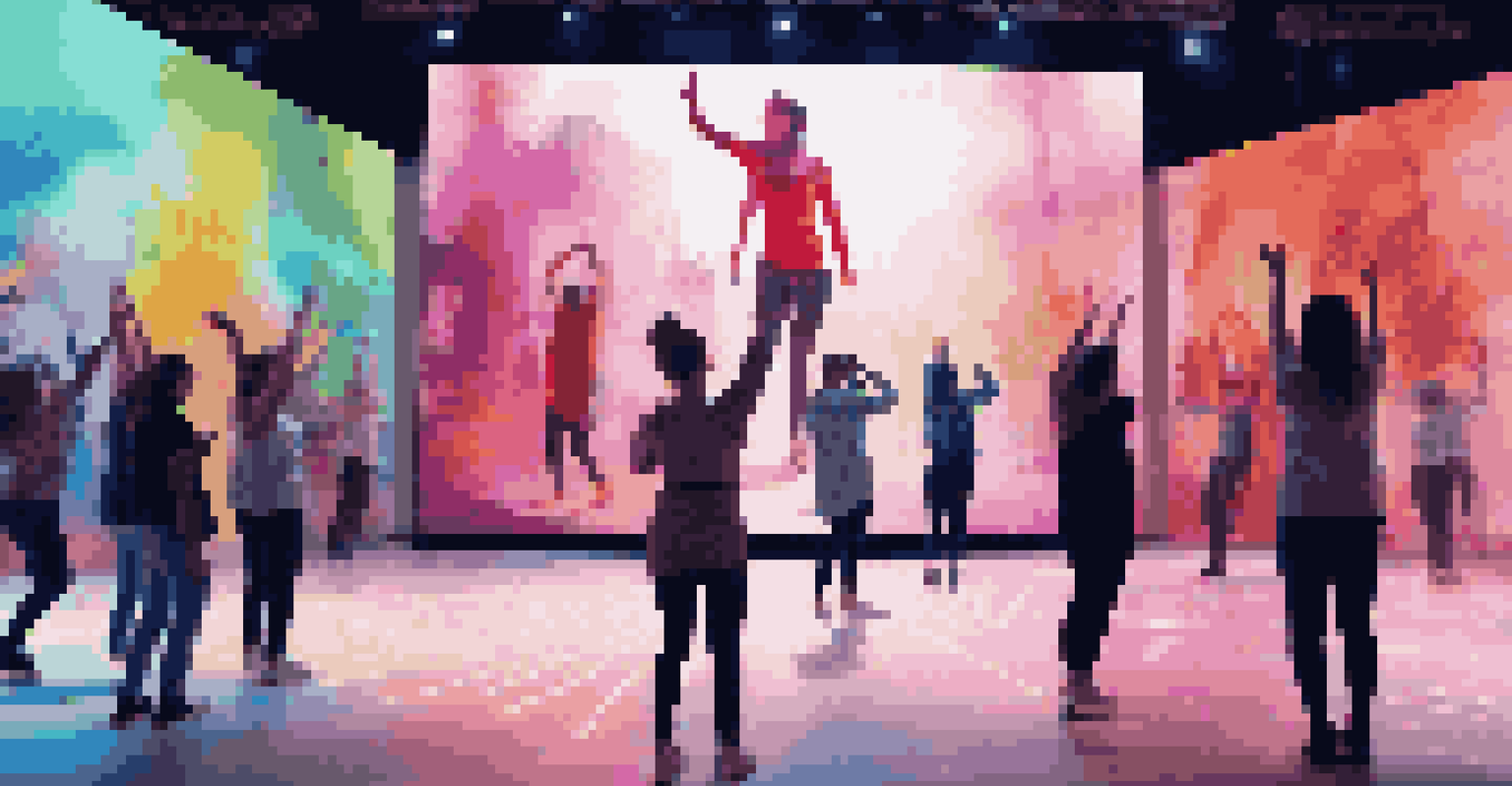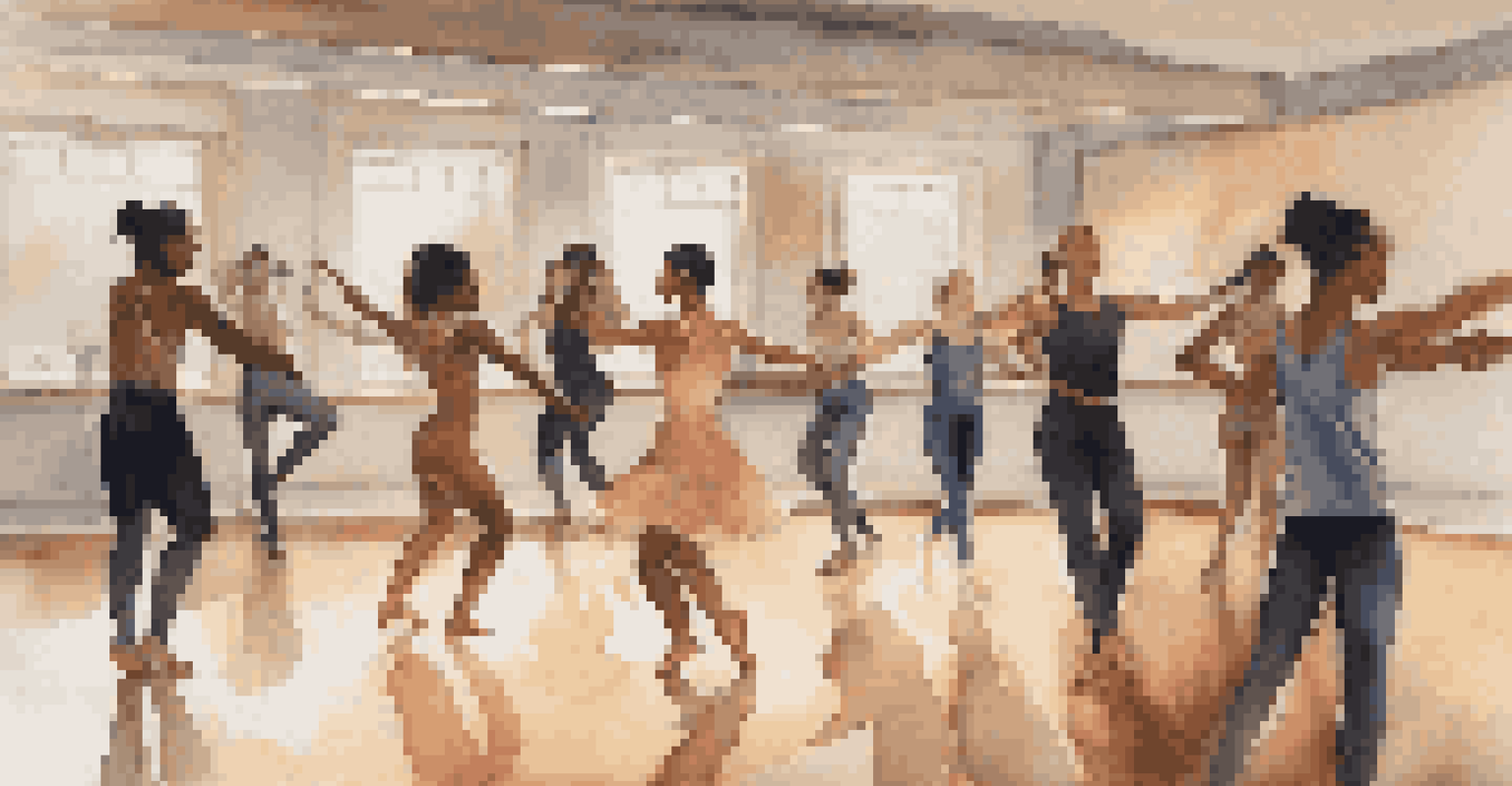Gamification in Dance: Engaging Audiences with Movement

Understanding Gamification and Its Impact on Dance
Gamification is the use of game-like elements in non-game contexts to motivate engagement. In the world of dance, this means incorporating interactive elements that encourage participation. By transforming traditional performances into immersive experiences, dancers can captivate and involve their audiences in ways that were previously unimaginable.
The essence of dance is not only in the performance but in the connection it creates among people.
When audiences feel like participants rather than mere spectators, their overall experience is enhanced. This shift not only makes dance more accessible but also fosters a deeper connection to the art form. For example, incorporating challenges or rewards can encourage attendees to join in, creating a shared experience that enriches the performance.
Ultimately, understanding how gamification works in dance allows choreographers and performers to innovate. They can blend the structure of a performance with interactive elements, leading to creative approaches that both entertain and engage. This fusion of dance and gamification opens new avenues for artistic expression.
The Role of Technology in Dance Gamification
Technology plays a pivotal role in gamifying dance, serving as a bridge between performers and audiences. With the advent of apps and interactive platforms, audiences can engage with dance in real-time through their devices. This not only makes the experience more personal but also allows for a wider reach, as users can participate from anywhere.

For instance, mobile apps can offer dance tutorials or challenges that audiences can take part in before or during a performance. This pre-engagement primes them for the show, making them more invested in what they’re about to witness. Moreover, technologies like augmented reality can transform a standard performance into a visually stimulating spectacle that captivates all senses.
Gamification Engages Dance Audiences
Incorporating game-like elements encourages audience participation, enhancing their overall experience with dance.
By leveraging technology, dance companies can create dynamic environments where audiences feel empowered to engage actively. This not only enhances the overall enjoyment but also fosters community among participants. As technology advances, the potential for gamified dance experiences continues to expand.
Creating Interactive Dance Experiences for Everyone
To successfully gamify dance, it’s essential to create interactive experiences that cater to all audience members. This means designing activities that are not only fun but also inclusive, allowing everyone to participate regardless of their skill level. Simple movement challenges or dance-offs can invite both seasoned dancers and novices to join in the fun.
Incorporating gamification into dance transforms it from a passive experience to an active and engaging one.
Consider hosting events where the audience can vote on choreography or influence the performance's direction. This level of involvement blurs the lines between performer and audience, fostering a sense of community and shared experience. For instance, in a recent interactive dance performance, viewers were able to choose the next song, creating an atmosphere of excitement and unpredictability.
Incorporating feedback from participants can also enhance future performances. By understanding what resonates with audiences, choreographers can tailor experiences that keep participants coming back for more. Ultimately, interactive dance experiences enrich the art form while ensuring that everyone feels like a part of the narrative.
Benefits of Gamification in Dance for Audience Engagement
Gamification in dance offers numerous benefits, especially when it comes to engaging audiences. It promotes active participation, which can lead to a deeper appreciation for the art form. When people are involved in the experience, they are more likely to remember it and share it with others, amplifying its reach.
Additionally, incorporating elements of competition can spark excitement and motivation. Audiences might feel more inclined to attend performances, knowing there will be interactive components that challenge them. This sense of camaraderie encourages connections among participants, creating a community centered around dance.
Technology Bridges Dance and Viewers
Innovative tech, like apps and augmented reality, allows audiences to engage with dance performances in real-time from anywhere.
Moreover, gamified experiences can also enhance physical and mental well-being. Engaging in movement, whether through dance or related activities, can boost mood and reduce stress. By making dance a fun and interactive experience, we can inspire more people to embrace movement as a rewarding part of their lives.
Case Studies: Successful Gamified Dance Initiatives
Several dance companies have successfully integrated gamification into their performances, leading to remarkable audience engagement. One notable example is the 'Dance Walk' initiative, where participants are guided to dance while walking through a city. This not only promotes physical activity but also transforms public spaces into vibrant dance floors.
Another impressive case is the use of social media challenges, where audiences are invited to share their dance moves online. These challenges create a viral effect, encouraging widespread participation and engagement. The ability for audiences to showcase their creativity fosters a sense of community and belonging.
These case studies illustrate the potential of gamification in dance, showcasing how inventive approaches can lead to greater audience involvement. By learning from these successful initiatives, other dance companies can explore similar avenues to enhance their own performances and reach new audiences.
The Future of Dance and Gamification
As technology continues to evolve, the future of dance and gamification looks promising. We can expect to see even more innovative ways to engage audiences, such as virtual reality dance experiences that transport viewers into immersive worlds. This level of interaction can redefine how we perceive dance and its role in our lives.
Moreover, the rise of online platforms means that dance can reach global audiences without geographical limitations. Gamified experiences can be shared and adapted for various cultures, making dance a truly universal language. This cross-cultural exchange can enrich the art form and inspire new styles and forms of expression.
Interactive Experiences Foster Community
Creating inclusive, interactive dance activities helps build a sense of community and connection among participants.
Ultimately, the future of dance will likely be characterized by a blend of tradition and innovation. By embracing gamification, the dance community can continue to captivate audiences and foster a love for movement. As we look ahead, the possibilities for dance are boundless, promising an exciting evolution of this beautiful art form.
Conclusion: Embracing Gamification for Dance Engagement
In conclusion, gamification presents a unique opportunity for enhancing audience engagement in dance. By incorporating interactive elements, technology, and community-driven experiences, we can transform how we experience and appreciate this art form. Dance is not just about the performance; it’s about the connection it fosters among people.
As we embrace gamification, we open doors to new audiences who may not have previously considered themselves part of the dance world. This inclusivity can lead to a richer cultural landscape where diverse voices and movements flourish. The journey of dance evolves, and so should our approach to sharing it.

Ultimately, by embracing gamification, we can dance our way into the future—one where everyone has a chance to participate, celebrate, and connect through movement. Let’s step forward together and make dance an interactive experience that resonates with all.